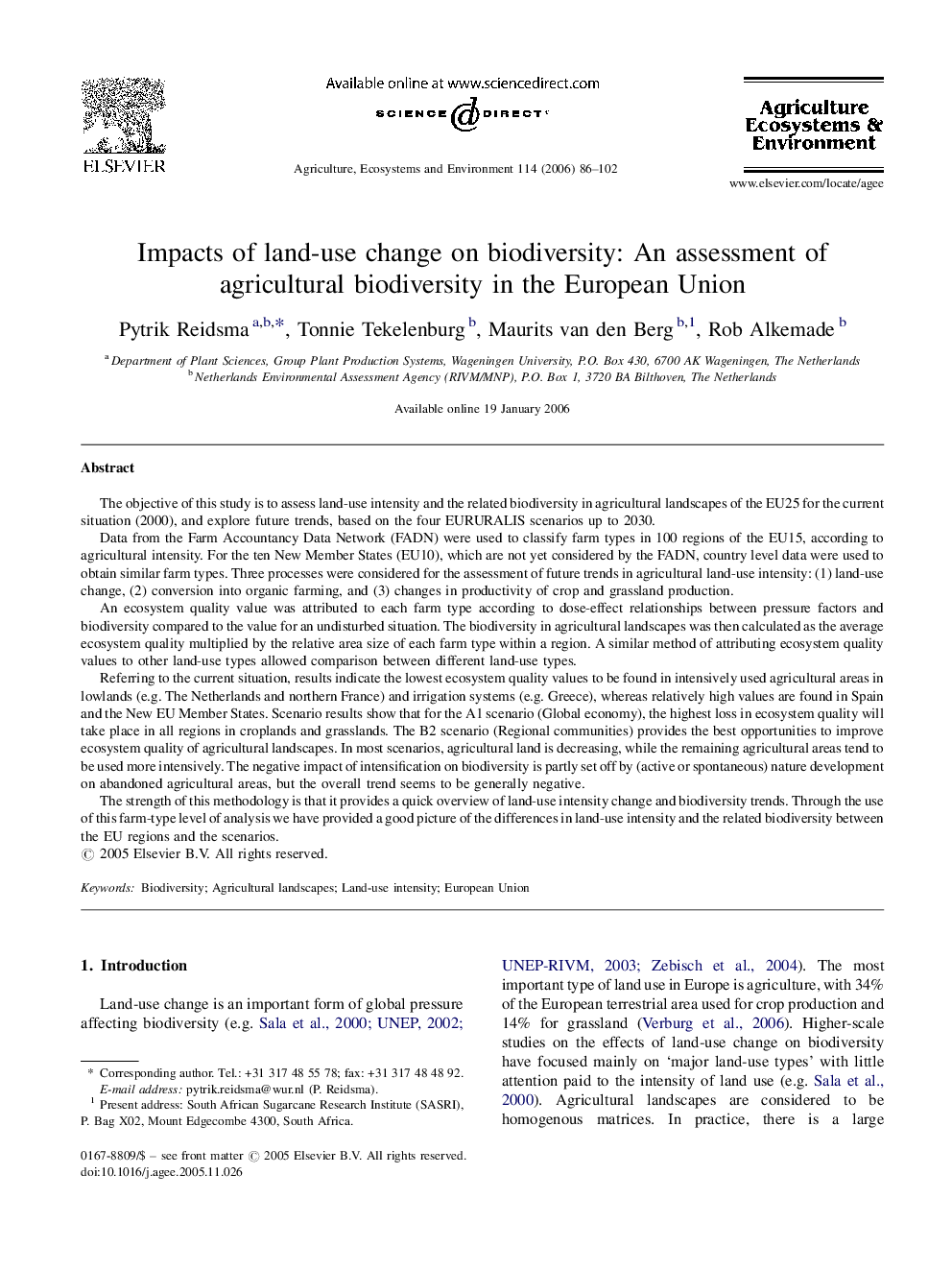| کد مقاله | کد نشریه | سال انتشار | مقاله انگلیسی | نسخه تمام متن |
|---|---|---|---|---|
| 2416126 | 1103992 | 2006 | 17 صفحه PDF | دانلود رایگان |

The objective of this study is to assess land-use intensity and the related biodiversity in agricultural landscapes of the EU25 for the current situation (2000), and explore future trends, based on the four EURURALIS scenarios up to 2030.Data from the Farm Accountancy Data Network (FADN) were used to classify farm types in 100 regions of the EU15, according to agricultural intensity. For the ten New Member States (EU10), which are not yet considered by the FADN, country level data were used to obtain similar farm types. Three processes were considered for the assessment of future trends in agricultural land-use intensity: (1) land-use change, (2) conversion into organic farming, and (3) changes in productivity of crop and grassland production.An ecosystem quality value was attributed to each farm type according to dose-effect relationships between pressure factors and biodiversity compared to the value for an undisturbed situation. The biodiversity in agricultural landscapes was then calculated as the average ecosystem quality multiplied by the relative area size of each farm type within a region. A similar method of attributing ecosystem quality values to other land-use types allowed comparison between different land-use types.Referring to the current situation, results indicate the lowest ecosystem quality values to be found in intensively used agricultural areas in lowlands (e.g. The Netherlands and northern France) and irrigation systems (e.g. Greece), whereas relatively high values are found in Spain and the New EU Member States. Scenario results show that for the A1 scenario (Global economy), the highest loss in ecosystem quality will take place in all regions in croplands and grasslands. The B2 scenario (Regional communities) provides the best opportunities to improve ecosystem quality of agricultural landscapes. In most scenarios, agricultural land is decreasing, while the remaining agricultural areas tend to be used more intensively. The negative impact of intensification on biodiversity is partly set off by (active or spontaneous) nature development on abandoned agricultural areas, but the overall trend seems to be generally negative.The strength of this methodology is that it provides a quick overview of land-use intensity change and biodiversity trends. Through the use of this farm-type level of analysis we have provided a good picture of the differences in land-use intensity and the related biodiversity between the EU regions and the scenarios.
Journal: Agriculture, Ecosystems & Environment - Volume 114, Issue 1, May 2006, Pages 86–102